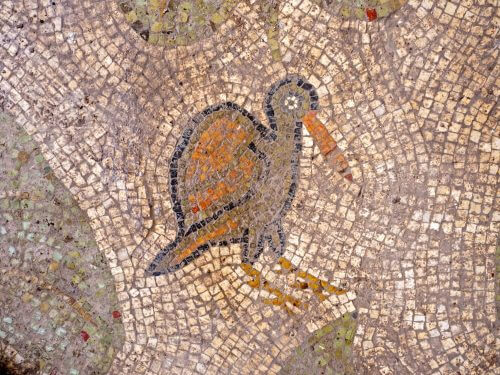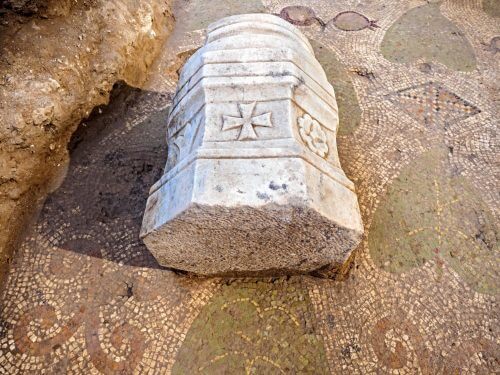An impressive colorful mosaic floor and imported marble items were discovered at the site * According to the director of the excavation, "the richness of the place indicates that the complex may have served as one of the main pilgrimage centers in the Yehuda Lowlands" * More than 1,000 youths participated in the archaeological excavations conducted by the Antiquities Authority in preparation for the expansion of the city, funded and at the initiative of the Ministry of Construction and Housing

Spectacular remains of a 1500-year-old monastery and church (the Byzantine era), including a colorful mosaic floor and imported marble items, are currently being uncovered in large-scale archaeological excavations by the Antiquities Authority in Beit Shemesh, in which more than 1,000 youth have participated so far. The excavations are being conducted as part of the establishment of the Ramat Beit Shemesh neighborhood in the city, at the initiative of the Ministry of Construction and Housing and through the CPM company under the management of Anatoly Snyder.
According to Benjamin Storchan, the director of the excavation on behalf of the Antiquities Authority, "We were surprised by the excellent preservation of the ancient finds, as well as by the wealth and splendor that were discovered here. This wealth may indicate that the large building, which seems to have been used as a monastery, was an important center, and may have served as one of the main pilgrimage centers in the Judean Lowlands. During the excavation, the remains of luxurious gas stone walls and impressive architectural items were revealed, including a marble column base decorated with crosses and even marble window bars. These impressive items were specially brought here from Turkey by sea, and were transported to the site from the coastline using carts. In one of the rooms we discovered a beautiful mosaic floor, decorated with colorful patterns of birds, leaves and pomegranates." "Archaeological research recognizes a number of ancient churches and monasteries in the Judean Lowlands," adds Storchen, but the church that has now been uncovered is unique in its extraordinary level of preservation.

So far, only a small percentage of the building plan of the monastery has been revealed, which was abandoned in the 7th century AD for reasons that are still unclear.
Since the beginning of the excavation - in the summer of 2017, more than a thousand youths from various settings, mainly schools and pre-military preparatory schools, have participated in it. According to 16-year-old Hadas Keich, a high school student for environmental education in Sde Boker, "We were looking for a way to lower the costs of the trip to Poland and decided to join the work in the archaeological excavations. Little by little, fascinating findings were revealed here, which connected me to my country and history. It's amazing what's hidden here right under your feet."
See more on the subject on the science website:
- A Byzantine inscription in Greek was discovered near the Nablus Gate in Jerusalem
- An impressive complex from the Byzantine period with a large textile house, wine cellar and mosaics was uncovered in Beit Shemesh
- Evidence of the destruction of Jerusalem by the Babylonians was uncovered in the City of David
